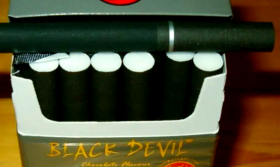Title: The Unseen Casualties: How Secondhand Smoke Endangers Exhibition Staff
The vibrant, bustling atmosphere of an exhibition hall is a testament to human ingenuity and commerce. For days or even weeks, these spaces become temporary homes to innovators, salespeople, and artists showcasing their latest work. Yet, beneath the surface of this dynamic environment lurks a pervasive and often overlooked occupational hazard: secondhand smoke. While public awareness of the dangers of smoking has grown, the specific and acute risks faced by exhibition staff—the coordinators, booth attendants, security personnel, and hospitality workers—remain largely invisible. These professionals are the silent casualties of a preventable health crisis, forced to endure prolonged exposure to toxic fumes with significant consequences for their well-being.
The Unique, Confined Environment of an Exhibition
Unlike open-air public spaces or well-ventilated offices, exhibition halls present a unique challenge. They are often vast, enclosed spaces with complex but frequently inadequate ventilation systems designed for climate control, not for rapidly clearing airborne contaminants. When smokers light up in designated areas—or worse, in prohibited zones—the smoke does not simply dissipate. It becomes trapped, mixing with the air and creating a lingering, toxic haze that blankets the entire venue. Staff members, whose jobs require constant movement through these halls, cannot avoid it. They are a captive audience to this pollution, inhaling it for the entirety of their long shifts, which often extend to 10 or 12 hours during major events. This prolonged, intense exposure far exceeds the occasional encounter a passerby might experience on a street, placing staff in a high-risk category.

Deconstructing the Chemical Assault
Secondhand smoke is not merely an unpleasant odor; it is a classified Group A carcinogen. For staff breathing it in throughout their workday, it is a direct chemical assault. The smoke is a complex mixture of over 7,000 chemicals, hundreds of which are toxic, and about 70 can cause cancer. These include:
- Nicotine: An addictive substance that affects heart rate and blood pressure.
- Carbon Monoxide: A poisonous gas that reduces the blood’s ability to carry oxygen, leading to headaches, dizziness, and fatigue—particularly debilitating for staff who need to be on their feet and alert.
- Formaldehyde, Benzene, and Arsenic: These are just a few of the known human carcinogens present that are linked to cancers of the lung, throat, sinuses, and more.
For exhibition staff, the immediate effects are palpably felt. It manifests as persistent coughing, wheezing, sore throats, headaches, eye irritation, and nausea. These symptoms are not just minor discomforts; they directly impact their ability to perform their jobs effectively, diminishing their energy levels and concentration.
Long-Term Health Consequences: An Occupational Betrayal
The true injustice lies in the long-term health ramifications. The World Health Organization (WHO) states there is no safe level of exposure to secondhand smoke. For staff working multiple events per year, this exposure is cumulative, significantly elevating their risk for devastating health conditions over time.
- Respiratory Diseases: Chronic exposure is a primary driver for developing asthma, chronic obstructive pulmonary disease (COPD), and other chronic respiratory conditions.
- Cardiovascular Damage: Chemicals in the smoke damage blood vessels, making blood more likely to clot. This dramatically increases the risk of heart attacks and strokes, even in otherwise healthy, non-smoking individuals.
- Cancer: The risk of developing lung cancer increases by 20-30% for non-smokers regularly exposed to secondhand smoke. Risks for other cancers, including breast cancer, nasal sinus cavity cancer, and nasopharyngeal cancer, are also elevated.
- Reproductive Health: For a significant portion of the hospitality and events workforce—often of childbearing age—exposure poses grave threats. It can contribute to complications during pregnancy, including low birth weight, preterm delivery, and even sudden infant death syndrome (SIDS).
This elevated risk profile transforms their workplace from a place of professional growth into a site of constant health jeopardy.
Beyond Health: The Economic and Moral Dimension
The harm extends beyond physical health. Staff suffering from smoke-induced headaches or respiratory distress may take more sick days, reducing productivity and increasing operational costs for employers. Morally, it represents a profound failure of duty of care. Employers and event organizers have a responsibility to provide a safe working environment, free from known health hazards. Allowing secondhand smoke to permeate the venue is a neglect of this fundamental obligation.
Furthermore, the presence of smoke creates an unpleasant and unprofessional working environment. It clings to clothing, hair, and booth materials, creating a constant reminder of the hazard and diminishing staff morale and job satisfaction.
A Call for Stringent Protection and Smoke-Free Policies
The solution is clear, achievable, and long overdue. The most effective way to protect exhibition staff is the implementation and strict enforcement of comprehensive 100% smoke-free policies within all indoor exhibition venues. Designated smoking areas, even if physically separated, are ineffective as smoke drifts and ventilation systems recirculate the contaminated air. Smoking must be entirely prohibited indoors.
Protection must extend to outdoor areas near entrances and ventilation intakes to prevent smoke from seeping inside. Organizers must provide well-signposted, dedicated outdoor smoking zones situated a sufficient distance from any entry points.
Ultimately, safeguarding the health of exhibition staff is not a logistical challenge; it is a question of priority. It requires a collective shift in mindset from event organizers, venue managers, and public health authorities. These individuals are the engine of every successful event. Their health and safety must be non-negotiable. By creating truly smoke-free environments, we can ensure that the world of exhibitions remains a place of innovation and inspiration, not a preventable threat to the people who make it all possible.














